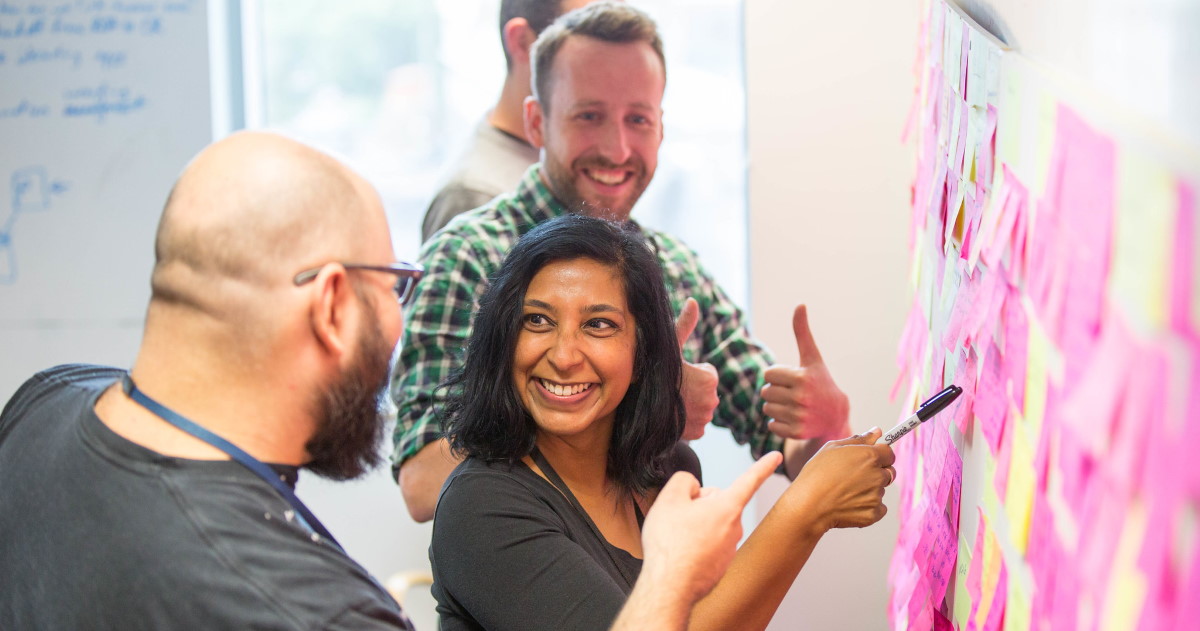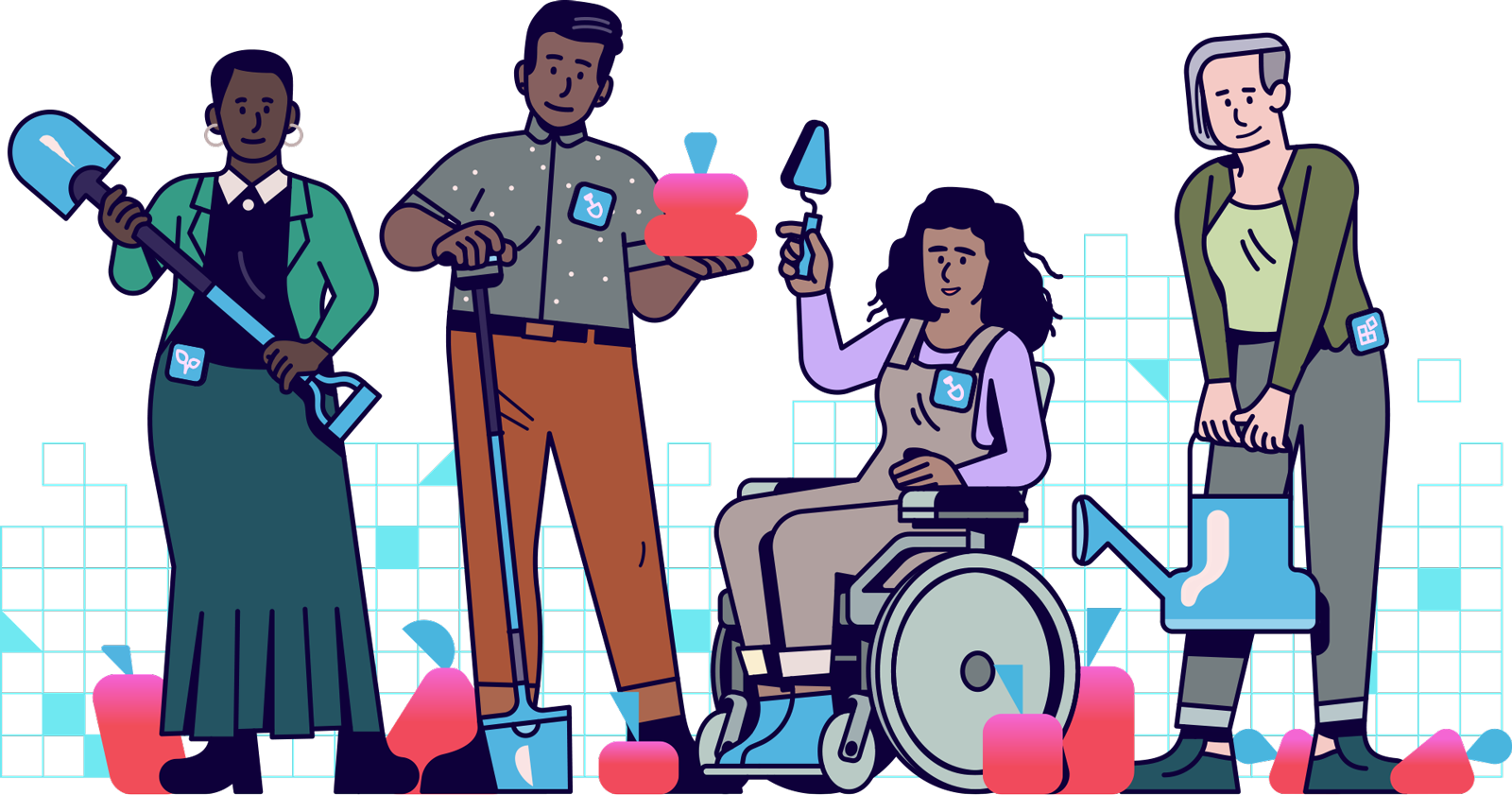
User research is not the sexiest of activities. And it can feel like putting the brakes on your new idea. But if you want to build a digital service that meets your users’ needs, it’s a must-do.
You’ve been supporting your beneficiaries for years. You think you know what they need. You believe you know what type of digital service to create.
But hold up. Unless you’ve already tested your idea you can’t be sure it'll work for your users. You can't yet know how to make it accessible and usable for them. You will still have assumptions. Only user research, followed by testing, will validate these, or show you they are wrong.
At Catalyst we believe in doing user research. That means:
- Researching your users’ needs: their goals, problems, attitudes and behaviours
- Analysing and challenging these findings with at least one colleague
- Turning your insights into a list of user needs
Here’s what user research is and how it works.
User research leads directly to user value
The best digital services can only be made by charities who understand their users. Their services:
- Are easy and pleasurable to use
- Are directly relevant to users' day-to-day lives
- Help users solve a problem or frustration they regularly experience.
In short they have user value.
They have user value because the service's team did enough of the right research before they developed a concept, made a skateboard or wrote a line of code (not all services even need code).
It’s a way of understanding the needs, motivations, behaviours, desires of people when they are ‘using’ a product or a service. Doing user research helps generate actionable insights.” — Cassie Robinson, National Lottery Community Fund

It creates empathy and understanding
In your day-to-day work you’ve probably developed a good understanding of your users. That’s important. But to build a good digital service you need to dig deeper into how and why people behave as they do. You need to get your research spade to work on three things:
- How they currently solve their problems
- Their digital behaviour and commonly used devices
- The context within which they experience their problems
You need to talk to people in ways that generate empathy (no focus groups required here).
Empathy is at the heart of design. Without the understanding of what others see, feel, and experience, design is a pointless task.” — Tim Brown, CEO of IDEO
You could build even more empathy by learning about their lives even more. But it’s usually better to focus on the problem and the things that affect how your users experience it and cope with it.
It uses common tools we already know
“To truly understand user behaviours, it’s better to spend a lot of time with a smaller number of people, rather than one moment with a lot. So rather than surveys, you use techniques like semi-structured interviews or shadowing.” — Digital Service Principle 1, CAST
User research typically uses these techniques:
- Desk-based – learning about your user group from previous research
- Interviews – talking in-depth with five users to gain insights into their lives
- Service safari – observing users in their day-to-day lives (sometimes possible, always valuable)
Here’s some tips on doing these things remotely.
Later on you’ll research and test prototypes with your users. You might even run some co-design sessions. But only after doing enough user research first.
You don’t need to do as much as you think
In her book ‘Just Enough User Research’ Erika Hall explains the principles and practices of doing exactly that: just enough research. It’s reassuring to know that you don’t need to do as much as you thought. Erika also encourages us to reflect on our blind spots and biases.
Understand that doing less of the right research is more useful than doing lots of the wrong type. After five interviews you should have established your users’ main needs and behaviours. If you haven’t then do another five.
Read the book, it’s just long enough.
It’s not focus groups and consultation events
Sorry. I know we love ’em in the sector, but they’re not much use when it comes to user research. Both events create artificial environments where discussion is moderated and influenced by group dynamics. Conversations become abstracted, users end up feeling inhibited.
It’s really hard to design products by focus groups. A lot of times, people don’t know what they want until you show it to them.” — Steve Jobs
User interviews are different. Group dynamics disappear, 1-1 connection becomes possible and users feel more comfortable opening up and sharing their experiences. This generates deeper and more reliable insights.
It doesn’t ask people what they want
The first rule of user research: never ask anyone what they want.— Erika Hall, Just Enough Research
One of the biggest shifts that charities are making in their approach to user research and digital design is stopping asking people what they want. Steve Jobs and Henry Ford knew that as humans we aren’t good at knowing what we want. Even when we think we do. If you still need convincing that this is the right thing to do then read this.
Instead ask ‘why’? Try to find out your users’ underlying needs and behaviours. Keep a skeptical mindset about your discoveries. Use questions like these.
It’s collaborative
Good user research involves the whole team. You might share research tasks, but you’ll always analyse findings and generate insights together. It has to be this way. If you don’t collaborate then bias occurs and insights get missed.
Also, the best people to apply your research later on will be the people who carried it out. So get your designers and frontline workers involved. Give everyone the chance to bring their insights to the table.
Enough for now
We could go deeper. But for now let’s call a halt.
You can read what to do next in how to synthesise your user research.
You can also go deeper into user research with our 6 lesson email course.

Support & services
Our free services help you make the right decisions and find the right support to make digital happen.
Learn what other non-profits are doing
39+ organisations share 50+ Guides to how they use digital tools to run their services. Visit Shared Digital Guides.



